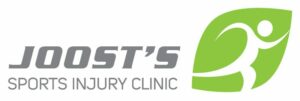How to heal a heel – treating heel spurs with Traditional Chinese Medicine
At Joost’s Sports Injury Clinic, Sunshine Coast, we encourage you, if you haven’t already, to try Traditional Chinese Medicine as part of your mission for freedom from pain and an overall healthier life.
What are heel spurs?
There’s a pain on the bottom of your foot, somewhere near you heel. You only notice it after exercise or some random activity, or perhaps when you wake up in the morning or after a long time sitting down, you eventually get up and think ‘ouch!’ – you may have a heel spur.
The heel bone is the largest bone in the foot and absorbs the most amount of shock and pressure. A heel spur develops as an abnormal growth of the heel bone. When a foot bone is exposed to constant stress, calcium deposits build up on the bottom of the heel bone. The causes can range from excessive walking (especially if you are unaccustomed to it), running or jumping; to improperly fitted or worn-out shoes.
Often noticed in endurance athletes and those in their 40’s, heel spurs are a common foot problem in Australia. Women can also commonly experience it, particularly those who wear high heels frequently. Heel spurs, though not life-threatening, can significantly affect your ability to perform your usual occupational and recreational activities. Persistent overstressing of the foot and inflammation of surrounding tissues of the heel spur can also cause miniature tears in the tendon.
How do doctors usually treat heel spurs?
Bone spurs rarely require treatment unless they are causing frequent pain or damaging other tissues. Symptomatic treatment involves stretching, ice packs and rest (especially those activities that contribute to making the condition and symptoms worse).
Taping and other physical therapy modalities are starting to make their way into non-surgical western treatments as a way of prevention. When inflammation around the heel spur does get to a certain level, you’ll feel it. Conventional western treatments for heel spurs and associated conditions include custom-made orthotics; anti-inflammatory drugs – which can help temporarily but have some serious long-term side effects such as gastrointestinal upset and bleeding; and cortisone injections – but many physicians do not like injecting this around the heel. The side effects of steroids injected in this area can be serious and worsen symptoms. When these options fail, surgery may be necessary. But these treatments can take time and leave much to be desired in terms of getting a patient back on their feet (literally) with less chance of recurrence.
How can traditional Chinese medicine help?
Traditional Chinese Medicine (TCM) is another alternative or contributing treatment alongside conventional medicine for you to try. The only time a heel spur is painful is when surrounding tissues become inflamed. TCM views the pain as an imbalance or disorder to the body’s natural state. It not only works locally at the site of the problem but systemically to encourage the body’s own self-healing processes. In other words, the aim is to clear the inflammation and allow the body to do its job.
At Joost’s Sport Injury Clinic, various TCM treatments can be deployed which could include moxibustion and massage therapy where maximum tenderness can be palpated.
It is truly not necessary to let heel spurs slow you down.
For more information, contact us today and let us help you get back on your feet soon.

